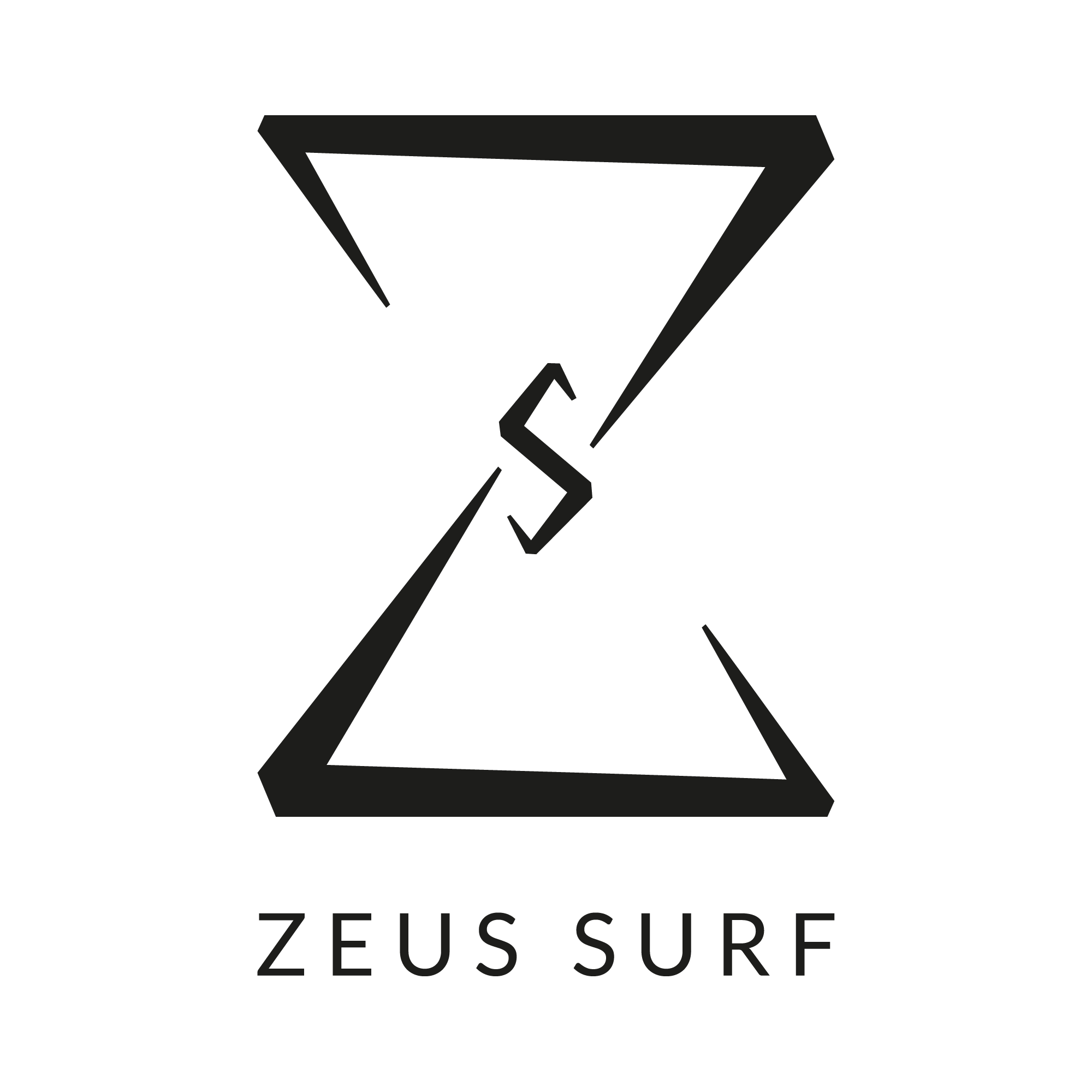“In surfing jargon, you have probably heard, how to find the right opportunity”
Immerse yourself in the thrilling world of surfing with our complete guide to choosing the perfect used surfboard! 🌊☀️ Imagine yourself gliding gracefully over the waves, the salty breeze caressing your face, each movement a perfect dance with the ocean. But wait, do new boards make you hesitate to dive into that azure dream?
In this article, we are going to delve into the well-kept secrets of the used surfboard market. Whether you're an enthusiastic beginner looking for your first board or a wave veteran looking for a new challenge, our guide will help you choose your board without breaking your budget.
💰 Let us guide you through the stormy waters of buying used boards, showing you the steps to finding that rare gem among the tempting offers.
So, hold on to your board and let us show you how to ride the second-hand market wave while keeping a smile and saving money. 💥🤙
Summary 🏄🏻♂️
1. Why Choose a Used Surfboard?
2. Where to Find Used Surfboards?
3. What Are the Key Points to Look at on a Used Board?
4. What Size Used Surfboard Should You Choose?
5. What Type of Used Surfboard Is Suitable for Your Level?
6. How to Evaluate the General Condition of a Used Surfboard?
7. How to Negotiate the Price of a Used Surfboard?
8. What Are the Pitfalls to Avoid When Buying a Used Board?
9. How to Maintain a Used Surfboard?
Now, let's dive into the details of each section.
1. Why Choose a Used Surfboard?
When considering purchasing a new surfboard, the used option can be extremely beneficial in several ways. Here are some reasons why choosing a used surfboard might be the best decision for you:
-
Financial Savings 💸: One of the main reasons for choosing a used surfboard is the financial saving it offers. New surfboards can be expensive, especially if you're aiming for name brands and high-end models. Opting for a used board gives you access to quality equipment at a considerably reduced cost.
-
Access to Quality Brands and Models: By choosing a used surfboard, you can have access to renowned brands and models that you might have found out of your budget when buying new. This means you can enjoy the performance and durability of the best brands in the industry without spending a fortune.
-
Exploration and Diversification: Buying a used surfboard gives you the opportunity to explore different types of boards and styles of surfing without committing financially to a new board. This is a great opportunity to test different fin shapes, sizes and configurations to discover what best suits your surfing style.
-
Less Risk for Beginners: For beginner surfers, investing in a new board can be risky. Beginners are often still learning and improving their skills, which can result in scratches or dents on the board. Opting for a used board allows beginners to practice and progress without fear of damaging an expensive board.
-
Preserve the Environment: Buying a used surfboard can also help preserve the environment by reducing the demand for new boards. The manufacturing of new surfboards can have an environmental impact, particularly in terms of materials used and transport. By opting for second-hand, you are participating in a more sustainable approach.
Choosing a used surfboard can be a wise option for surfers of all levels. This combines financial benefits , access to quality equipment and the opportunity to explore various options. Before purchasing, be sure to check the general condition of the board , the details of its construction and its suitability for your surfing level and style.
2. Where to Find Used Surfboards?
Now that we've laid the foundations, it's time to go on the hunt for the perfect surfboard. Don't worry, we've put together a modern treasure map to direct you to the best sources for quality used surfboards.
-
Local Surf Shops: Your local surf temples can be a gold mine for second-hand finds. These wave haunts often offer a carefully vetted selection of used boards that have earned the experts' seal of approval.
-
Online Classified Ads Sites: Online platforms like Leboncoin. You will discover a multitude of ads for used surfboards, allowing you to explore a variety of models and brands.
-
Surf Communities: Surfers come together not only in the water, but also online. Facebook groups and forums dedicated to surfing are places where enthusiasts share not only their adventures, but also their second-hand board finds. Joining these communities can open doors to unique opportunities.
-
Additionally, keep in mind that the opportunities to find a used surfboard are not limited only to specialty stores and online platforms. Local surf schools and surfcamps are also great resources for unearthing hidden gems . Enthusiasts who frequent these places often have boards to sell or exchange, and these offers can sometimes hold nice surprises.
Our advice: If you buy your used board online, make sure that the board is carefully packaged , we advise you to use a specialized transport service for surfboards such as Colisport . Take the time to check the condition of the package when your board is delivered.
3. What Are the Key Points to Look at on a Used Board?
When considering purchasing a used surfboard , it is crucial to carefully consider some key points to ensure you make a wise choice. Here are the things to watch out for:
-
Bottom Condition: Review the bottom of the board for any cracks, dents or repairs. A damaged bottom can compromise the performance of the board and affect your surfing experience. Also look for delaminations, which are separations of the layered lamination of the board.
-
Condition of the Nose and Tail: Carefully check the condition of the nose (front part) and tail (rear part) of the board. Make sure they are in good condition and have not suffered significant damage, such as deep dents or cracks. Damage to the nose or tail can influence the general behavior of the board in the water.
-
Rails and Deck: The rails (side edges) and deck (top part) of the board should also be inspected. Look for any distortion, dent or structural damage. Warped rails or a sunken deck can affect the stability and performance of the board. Make sure the rails have no breaks or chips.
-
Aileron Boxes: Check the condition of the aileron boxes. They must be intact and well attached to the board. If the board uses removable housings, make sure the mounting screws are in good condition and not oxidized. Damaged housings can make the board unstable in the water.
-
Leash Plug: The leash plug, which is the attachment for the leash, must be in good condition. Make sure it is securely attached to the board and that there are no cracks around its location. A damaged leash plug can cause the board to be lost in the water.
Our professional advice: take the time to carefully inspect the equipment and ask why the seller wants to part with his board.
4. What Size Used Surfboard Should You Choose?
Choosing the size of your used surfboard depends on several factors, including your skill level , your weight , and the type of waves you plan to tackle. Here are some tips to guide your decision:
-
Skill Level: If you're a beginner, opt for a generously sized board, such as a longboard. These boards provide more stability and are more forgiving of placement errors. If you are an experienced surfer, you may want to consider shorter, more responsive boards.
-
Weight: Your weight influences the buoyancy of the board. Lighter surfers can opt for boards with less volume, while heavier surfers can benefit from more buoyancy offered by larger boards.
-
Wave Type: If you are aiming for smaller, softer waves, a longer board may be preferable. For more powerful and hollow waves, a shorter, more maneuverable board might be better suited.
5. What Type of Used Surfboard Is Suitable for Your Level?
Choosing the type of used surfboard depends greatly on your skill level and surfing style. Here are some general recommendations:
-
Beginners: If you are new to surfing, opt for boards that are more stable and easy to paddle, such as longboards. These boards provide a stable platform to learn the basics with confidence.
-
Experienced Surfers: If you have more experience, you might consider higher performance options, like shortboards. These boards are more responsive and suitable for surfers who can maneuver in more demanding waves.
6. How to Evaluate the General Condition of a Used Surfboard?
-
Feel for Damaged Areas: Run your hands over the board to feel for imperfections.
-
Look at the Repairs: Check to see if the repairs are well made and sturdy.
7. How to Negotiate the Price of a Used Surfboard?
-
Do your Research: Know the approximate value of the board.
-
Inspect Carefully: Defects can be used to negotiate a lower price.
Note that certain brands have a better value on the second-hand market? This is the case for Firewire , DHD , Channel islands, Slater design, Pyzel surfboards. These brands are more popular in the surf market.
Certain types of shapes are also very popular such as mini malibu and fish and longboards. Do not hesitate to ask questions about the construction of the boards, whether they are foam, epoxy resin or polyster.
8. What Are the Pitfalls to Avoid When Buying a Used Board?
-
Board Too Damaged: If the repairs are extensive, this can affect performance.
-
Purchase Without Trial: Ask if it is possible to try your future board before purchasing it.
9. How to Maintain a Used Surfboard?
-
Rinse After Use: Rinse the board with fresh water to remove salt.
-
Quick Repairs: Deal with small problems quickly to prevent them from becoming bigger.
Conclusion
Congratulations, you now have the tools and knowledge to go after your perfect used surfboard .
Remember, every used board tells its own story, marked by past rides and adventures experienced. It is this history that gives it a unique soul and a special connection with its next owner.
Whether you opt for a vintage board with an authentic aura or a more modern option, the key is to stay curious, patient and ready to dive into the world of used surfboards.
If you're ready to start this thrilling adventure, don't forget to check out our carefully selected collection of used surfboards on our online store. Who knows, your perfect board could be just a few clicks away. So, put on your wetsuit, grab your board and get ready to create your own epic stories on the waves! 🌊🏄♀️
How much should I spend on a used surfboard?
The price of used surfboards varies depending on several factors such as brand, age, condition and model.
In general, beginners can find good options between €150 and €500, while more advanced boards can cost between €500 and €1000. Set a realistic budget based on your needs and skill level.
The best surf stores and marketplaces to find a rare gem
- Akewatu ✅
- The Good Corner ✅
- SurfingGo ✅
- Alltroc in Hossegor ✅
- Barooders ✅
- Zeus occasions - on our Zeus store 🏄🏻♂️
Watch the Surf Session video:




